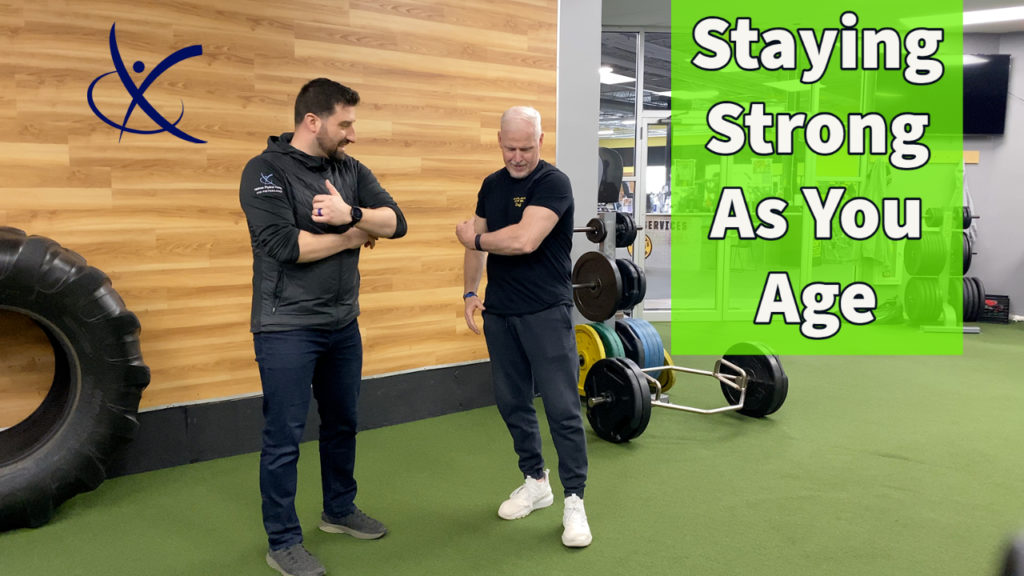Why We Need More Strength Training as We Age
As we get older it becomes more important to keep moving. Unfortunately, the typical expectation is that older individuals should do less because they are weaker and more prone to injuries. What if we told you that the increased risk of injury is due to the lack of activity? What if we said there is an inverse relationship between movement and injuries?
Have your attention yet?
Notice I said old-er, not old. The fact is we’re all going to get older. We haven’t found the fountain of youth yet. So how can we foster better health, decrease injuries, and also maintain a quality of life with independence as we age? The secret doesn’t lie in some magical jungle swimming hole. It’s in the weight room.
The considerations taken for the aging athlete are not too complicated. We can tackle this the scientific way, or we can approach it in a pragmatic way.
Exercise Science…
If you’re a coach or trainer (or even a healthcare provider) you need to understand the goals. If we want to stimulate some sort of physical change in the body, then we need to aim for 75% of the body’s capacity. This needs to happen 2-3x a week and the program needs to have individualization and periodization.
Pragmatic:
Don’t let anyone stop you from getting a good sweat.
- Don’t stop lifting heavy things
- Don’t avoid difficult tasks
- Don’t stay in your comfort zone
While many conventional notions tell us to move less and “take it easy” as we get older, we really need to do the opposite. Our musculoskeletal system requires consistent movement to maintain proper health and function. When we stop moving, we lose capacity. Have you ever had the flu for a few days? How do those stairs feel the first few times up and down? We cannot stop moving otherwise our ability to tolerate movement also stops.
The world around us doesn’t stop either. Stairs exist, curbs exist, and you will need to pick something up off the ground, or even get down onto the ground. Let’s not forget about low couches or car seats. In order to maintain confidence in different environments, we must continue to tackle these various tasks with some purpose. Your body doesn’t care whether it is a fancy weight at the gym, or if it’s a laundry basket. Your body only knows stress, and we should continue to build daily or weekly repetitions into our routines that mimic the demands of everyday life, or the physical world around us.
I understand the desire for a simpler life and fewer stairs. But the world around us isn’t a single-story ranch. We shouldn’t pigeonhole aging individuals/clients by letting them do less. When we talk about the benefits of strength training, it’s’ not just for sports; it’s for life. We as coaches, trainers, or healthcare workers should be encouraging them to do more.
Not only will proper exercise strengthen the bones, muscles, and joints, but it will help build confidence in daily tasks and increase the body’s tolerance to movements. Our goal should be to help eliminate barriers for the aging individual rather than create a list of do’s and don’ts. We should all be pushed outside of our comfort zone of familiar and easy tasks because that is how our physical bodies change.
Squats, deadlifts, steps, farmer carries, and floor rolling are commonly prescribed in our clinics. We don’t discriminate based on age because the weights don’t care when you were born. How many of those movements are you familiar with? Strengthen your bones. Get some more lean muscle. And don’t ever let yourself be trapped on the floor.
Happy Training!
